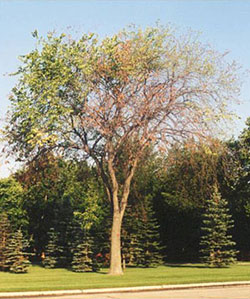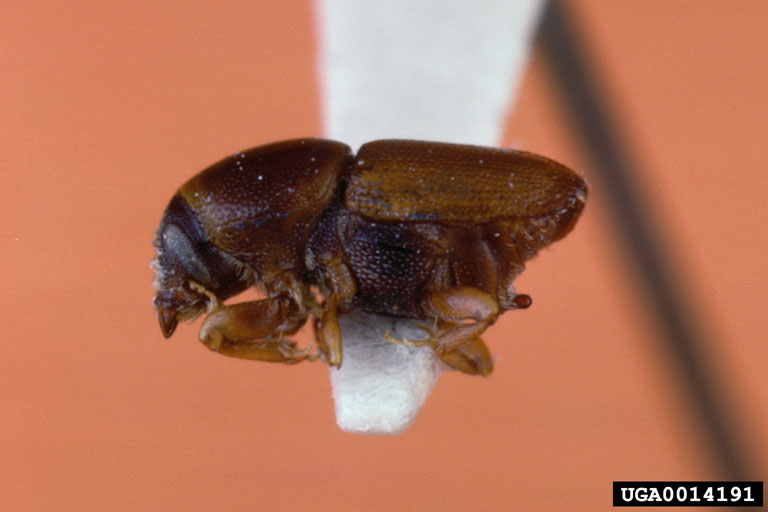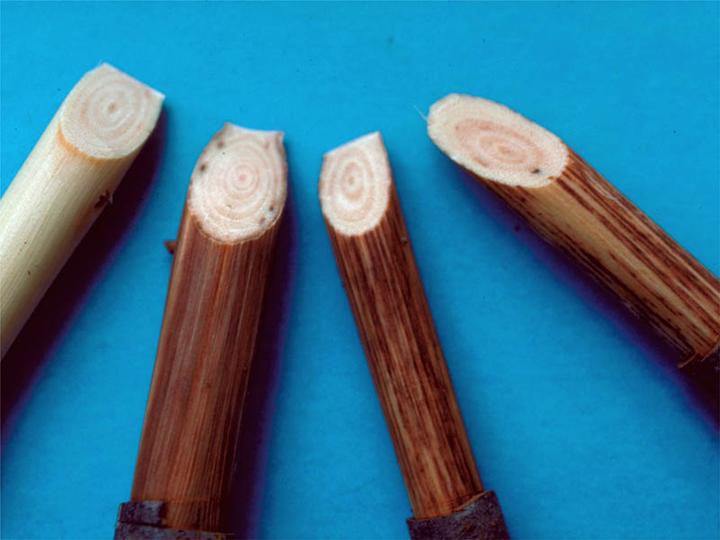
Dutch elm disease
| Primefact number | Edition | Published | Author |
|---|---|---|---|
| 1581 | First | Aug 2017 | Plant Biosecurity and Product Integrity |



Dutch elm disease (Ophiostoma ulmi, O. himal-ulmi and O. novo-ulmi) are exotic plant pests not present in Australia. This disease is a serious threat to Australia’s garden and nursery industry.
Dutch elm disease is a deadly fungal disease that causes fatal vascular wilt in elm trees (Figure 1). It is one of the world’s worst tree diseases, killing half of all European elms and three quarters of North American elms since 1910.
Notifiable status
Dutch elm disease is a notifiable plant disease in NSW.
All notifiable plant pests and diseases must be reported within 1 working day. You can report notifiable plant pests and diseases by one of the following methods:
- Call the Exotic Plant Pest Hotline 1800 084 881
- Email biosecurity@dpi.nsw.gov.au with a clear photo and your contact details
- Complete an online form
A full list of notifiable plant pests and diseases can be found in Schedule 2 of the NSW Biosecurity Act 2015.
Description
Dutch elm disease is caused by three fungi - Ophiostoma ulmi, O. himal-ulmi and O. novo-ulmi. These fungi are spread by elm bark beetles (Figure 2) or natural root grafts.
Early signs of Dutch elm disease are leaf discolouration or drooping at the branch tips. The leaves yellow, curl, go brown and fall off. Defoliation spreads across the tree.
Branches and stems develop dark brown streaks in their sapwood before dying (Figure 3). Some elms then send up root suckers, which can live for 15 years after the initial infection.
When the fungi are spread by elm bark beetles, wilting starts at the top of the tree and moves downwards. Where trees are infected with fungi transmitted via natural root grafts, wilting starts in the lower branches and spreads upwards.
Damage
Infected elms plug the xylem vessels in their sapwood to stop the Dutch elm disease fungi spreading inside them. This also stops the flow of water and nutrients in the infected plant, causing vascular wilt and eventual tree death.
Dutch elm disease fungi also make toxins that cause plant wilting. The three fungi can be rated by the damage they inflict. The O. novo-ulmi fungus is rated more deadly than O. himal-ulmi or O. ulmi, due to its higher toxin production, tree defoliation and host colonisation abilities.
Lifecycle
The Dutch elm disease fungal lifecycles have two stages – host colonisation and reproduction.
Young bark beetles emerge from their breeding chambers carrying fungal spores. They feed on the elm branch twigs, inoculating new hosts with spores. After infection the fungi colonise the elm’s xylem vessels causing vascular wilt.
As the elm bark beetle’s breeding chambers penetrate the xylem vessels, the fungi grow into them. They produce spores which inoculate the bark beetles and complete the fungal lifecycle.
Host range
The sole plant hosts of the Dutch elm disease fungi are elm trees (Ulmus and Zelkova species).
Affected elms include the American elm (U. americana), Caucasian elm (Z. carpinifolia), English elm (U. procera), European field elm (U. minor), mountain elm (U. glabra), red elm (U. serotina), rock elm (U. thomasii), Russian white elm (U. laevis), slippery elm (U. rubra) and winged elm (U. alata).
Spread
Dutch elm disease fungal spores are spread by many species of elm bark beetles. The smaller European elm bark beetle (Scolytus multi-striatus), found in Australia since 1974, is an insect vector for the Dutch elm disease fungi.
The Dutch elm disease fungi are also transmitted from infected to healthy trees through the natural root grafts that form between the interwoven roots of closely planted elm trees.
Dutch elm disease fungi are spread by infected bark mulch, firewood, logs and timber. The highest risk of disease introduction comes from infected bark, which can carry both the Dutch elm disease fungi and the elm bark beetle vectors.
Distribution
Dutch elm disease was first identified in the Netherlands in 1919. Hence the name “Dutch” elm disease. It has since been reported in Asia, Africa, Europe, North America and New Zealand.
Actions to minimise risks
Put in place biosecurity best practice actions to prevent entry, establishment and spread of pests and diseases:
- practice “Come clean, Go clean”
- ensure all staff and visitors are instructed in and adhere to your business management hygiene requirements
- source landscape and propagation material of a known high health status from reputable suppliers
- monitor your trees regularly
- keep records

